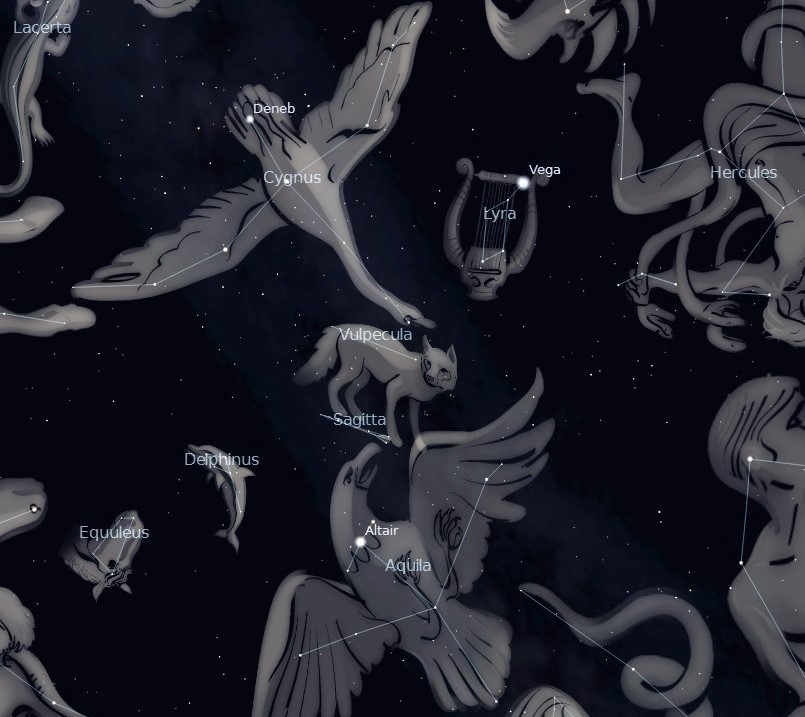This Week’s Sky at a Glance, 2020 August 29 – September 5 ~by Curt Nason
The Summer Triangle is at its highest in early evening. Vega pokes through the twilight overhead, followed by Altair to the south and Deneb to the east. All three are the brightest stars of their respective constellations of Lyra, Aquila and Cygnus. Although it is the dimmest of the trio, Deneb is actually much brighter but it is about 60 times more distant. If it were as close as the other two it would be more than ten times brighter than Venus.
I occasionally sit out on the deck shortly after sunset and just look up at the blue sky, waiting for Vega to appear. Easily amused, the blue background gives me a three dimensional view of my eye floaters. Then, with a little concentration, I look for a Maltese cross of pale yellow and blue light. Haidinger’s Brush isn’t in the sky; it is a phenomenon of the eye caused by the polarized light overhead. If you are really keen to learn about this see Wikipedia/Haidinger’s Brush.
This Week in the Solar System
Saturday’s sunrise in Moncton is at 6:36 am and sunset will occur at 8:02 pm, giving 13 hours, 26 minutes of daylight (6:42 am and 8:06 pm in Saint John). Next Saturday the Sun will rise at 6:45 am and set at 7:49 pm, giving 13 hours, 4 minutes of daylight (6:51 am and 7:53 pm in Saint John).
The Moon is full on Wednesday and it will be just below Mars very late next Friday night. Jupiter and Saturn are at their best for observing around 10 pm, at their highest in the south, and Mars is rising at that time. Telescope users can catch Jupiter’s Great Red Spot this Saturday at 10:30 pm, and on Tuesday its moon Ganymede emerges from behind the planet at 8:42 pm and disappears into the planet’s shadow at 9:35 pm. Venus is up bright and early in the morning sky, rising at 3 am.
With astronomy meetings and outreach activities on hold, you can watch the local Sunday Night Astronomy Show at 8 pm and view archived shows.
Questions? Contact Curt Nason.

